|
Note: All projects on this page were led, top-level designed, resourced, planned, managed, and delivered by W. Chapin.
In most cases they were also conceived by W. Chapin,
with the exception of:
The externally conceived projects were brought to him as problems needing a solution,
subject to specified requirements.
|
|
1984
|
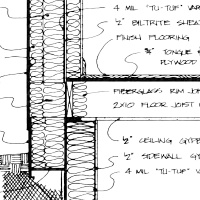 |
Progressive Energy-Efficient Construction Technique
|
| Where |
Northfield Solar Builders, Northfield, MN
|
| What |
Staggered double-wall super-insulated construction technique, featuring all-weather-wood foundation.
|
| Why |
Minnesota features 8980 degree-days per year in its climate.
By conserving existing energy, homes can be kept comfortable with very little new energy.
Benefits: New or retrofit cost-efficient, resource-efficient, and high-performing.
Innovation: structure is built with standard 2x4 construction, but with vapor-barrier on the outside.
The outer wall is hung from the truss tails with gussets, which works new or retrofit.
Vapor-barrier is not penetrated by electrical, plumbing, or HVAC.
Two-thirds of the insulation must be on the outside of the vapor-barrier to keep from condensation.
|
| Who |
W. Chapin was the design partner of a builder's coop.
Collaborated with partners Chris Sammond, Bernie Street, John Tripp, and Eric Johnson.
|
| Published |
Progressive Builder Magazine, September 1986, Full section
|
|
1988
|
 |
Engineering Design in 3D
|
| Where |
Department of General Engineering, University of Illinois, Urbana-Champaign
|
| What |
With NSF grant, designed, developed, and taught coursework to train engineers
to think and work in 3D which became standard 20 years later.
|
| Why |
The previous 75 years of engineering training, engineers were taught to compress
all ideas into 2D with descriptive geometry for design and communication.
Pleck and Woodley had already developed a 2D CAD program to teach engineering graphics
to freshman engineers, utilizing AutoCAD.
AutoCAD was on version 2.5 at the time, which had only rudimentary 3D support.
This project collaborated with Autodesk,
which released AutoCAD version 2.6, R9, and R10 during the period,
each successively adding more 3D support.
AutoCAD Release 11 (1990) finally reflected all of the demands of the coursework,
except solid modeling, which was supported separately as AutoSolid at the time.
|
| Who |
W. Chapin was the initiator and driving force.
Advisors and principal investigators, Prof Michael Pleck and Prof Thomas Woodley
had previously brought 2D CAD into the engineers' entry course on descriptive geometry.
|
| Published |
NSF Grant
Findings were published by Pleck and Woodley after W. Chapin transferred to Stanford.
|
|
1989
|
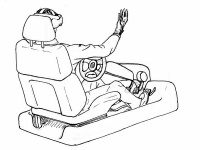 |
GDE Car Designer / Virtual Driving Simulator
|
| Where |
Automotive Systems Lab, Dept of Mechanical and Industrial Engineering, University of Illinois, Urbana-Champaign.
Completed at the Design Division, Dept of Mechanical Engineering, Stanford University
|
| What |
Developed real-time 3D graphic driving simulator using a discrete 5DOF dynamic model,
and real-time input for steering and throttle from external controllers.
|
| Why |
Went into engineering to design automobiles.
At UIUC I selected General Engineering, where I could build my own course of study,
combining Engineering Design, Industrial Design, and Automotive Engineering.
Two vehicle dynamics courses from Robert White had me designing suspensions and
running simulation models.
This project combined my interest in immersive simulation, 3D, and automotive engineering.
The simulator was written in AutoLisp, the 3D graphics were displayed in AutoCAD,
and it ran in real-time on a PC.
|
| Who |
W. Chapin advised at UIUC by
Prof. Robert White and
L. Daniel Metz.
Advised at Stanford by Bill Verplank and
Dennis Boyle.
|
| Published |
GDECD
|
|
1990
|
 |
VirtualHandController
|
| Where |
Center for Design Research, Stanford University
Inherited by Virtual Technologies, Palo Alto, CA
|
| What |
Developed first-known dynamic virtual human hand, VirtualHand, with full dexterity for telemanipulation.
Proprietary to Virtual Technologies (cofounder), it was acquired by Immersion Corporation.
|
| Why |
The VHC enabled dexterous manipulation of 3D virtual objects, the basis of W. Chapin's doctoral thesis.
The VHC enabled Jim Kramer's Talking Glove to be an input device for Virtual Reality (VR) systems.
Chapin and Kramer co-founded Virtual Technologies, Inc as the combination of VHC and the Talking Glove.
|
| Who |
W. Chapin and James F. Kramer were fellow doctoral students advised by Prof. Larry Leifer.
J. Kramer had invented a linear, solid-state electronic goiniometer,
which he employed within an instrumented glove as part of his "Talking Glove" project.
|
| Published |
VSEL VirtualHand Project
Video
|
|
1991
|
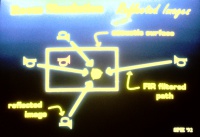 |
Acoustic Room Simulation (ARS)
|
| Where |
Telepresence Research, Palo Alto, CA and Crystal River Engineering, Groveland, CA
|
| What |
Initiated a series of hardware and software innovations in real-time audio simulation that progressed through 1997.
Co-developed acoustic room simulation (ARS) technology for modeling spatial acoustic environments that convey virtual presence, 1992.
ARS subsequently became proprietary to Creative Labs, Inc.
|
| Why |
The first version ARS1 was seminal and all subsequent iterations were additive.
The development culminated in "wave-tracing" (see 1994 below).
|
| Who |
W. Chapin collaborating with Scott H. Foster and Elizabeth M. Wenzel
|
| Published |
Telepresence Research,
SPIE
|
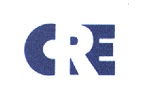 |
Acoustetron
|
| Where |
Crystal River Engineering, Groveland, CA
|
| What |
Developed hardware platform, application programming interface (API), and product series for acoustic room simulation called Acoustetron.
The first product was delivered to Disney Imagineering in 1992,
which facilitated Disney's immersive VR Aladdin ride at Disney World Florida, opening in 1995.
Developed Crystal River Engineering's CRE_TRON 3D audio API
that led development of positional 3D audio as a standard simulation display.
CRE_TRON was the template for Intel's RSX, VRML, Microsoft's DirectSound3D and Aureal's A3D API's.
|
| Why |
First interactive 3D audio platform-independent peripheral; first real-time, acoustics immersive auralizer
|
| Who |
W. Chapin with Scott H. Foster
|
| Published |
Prototype, Datasheet, Datasheet Atron II
|
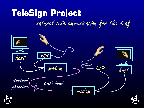 |
TeleSign
|
| Where |
Center for Design Research, Stanford University
|
| What |
Co-developed TeleSign, a device for manual language communication over normal phone lines.
TeleSign is proprietary to Stanford University.
|
| Why |
CDR has a long history of pro-bono design work for the disabled and handicapped.
TeleSign was a relatively easy derivative of our primary research work to benefit the less fortunate.
Obviously today, far superior communication could be attained over Internet video.
However, at the time, we needed to conform to phoneline bandwidth of a 9600 baud modem.
|
| Who |
W. Chapin with Larry Leifer, Cathy Haas, Elizabeth Macken, and James F. Kramer
|
| Published |
VSEL TeleSign Project,
Video,
JHU Search Paper,
|
|
1993
|
 |
DesignSpace
|
| Where |
Center for Design Research, Stanford University
|
| What |
Early focus of W. Chapin's doctoral thesis project on remote collaborative manual design within an immersive interface.
Achieved several firsts in project.
This will become a common means of design in 10 to 15 years.
Developed DesignSpace, a collaborative design environment that put computer-based modeling in the hands of designers. DesignSpace is proprietary to Stanford University.
|
| Why |
The next dimension of a user workspace and a remote group collaboration workspace
|
| Who |
W. Chapin, T. Lacey, and L. Leifer
|
| Published |
Re-created site .
Original 1995 CDR site still active.
Video
|
|
1994
|
 |
Virtual Grasp
|
| Where |
Center for Design Research, Stanford University
|
| What |
W. Chapin's doctoral thesis project on direct dexterous manipulation of virtual objects.
|
| Why |
Reaching through the Looking Glass
Always wanted to reach into a computer and manipulate data directly.
|
| Who |
W. Chapin, mentored by Larry Leifer and Mark Cutkosky
|
| Published |
VSEL VirtualGrasp Project
Video
|
|
1995
|
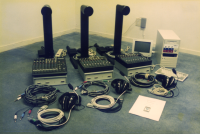 |
Multi-Listener MTRON for Immersive Audio Teleconferencing
|
| Where |
TeleSense Partners, Palo Alto, CA
|
| What |
3D Immersive Audio Teleconferencing system for NYNEX S&T
|
| Why |
NYNEX Science and Technology (S&T) saw DesignSpace at SigCHI '94 and
was intrigued by the audio part commercialized for their use.
|
| Who |
W. Chapin and Richard Zobel, recent grad of NCSU, partnered to form TeleSense
and build the 3D teleconferencing systems.
For Rory Stuart and John C. Thomas at NYNEX Science & Technology.
|
| Published |
MTRON Station
|
|
1998 - 2011 AuSIM Projects
|
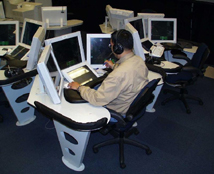
|
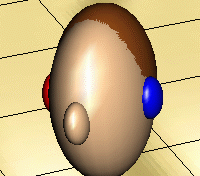
|
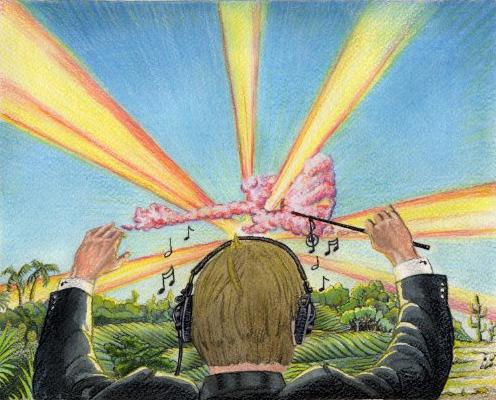
|

|
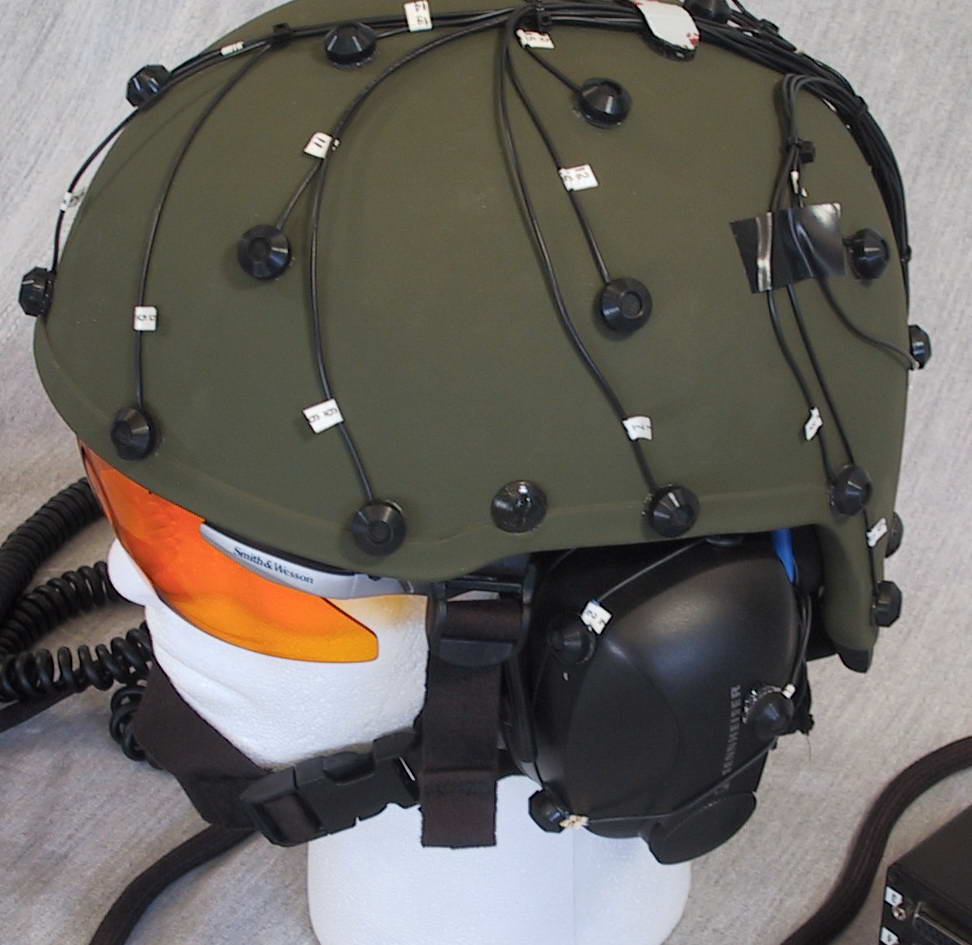
|
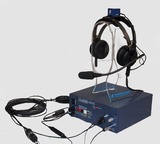
|
|
MMWS
|
AuSIM3D
|
InTheMix
|
WaveDance
|
LandWarrior / JSF
|
3DVx
|
|
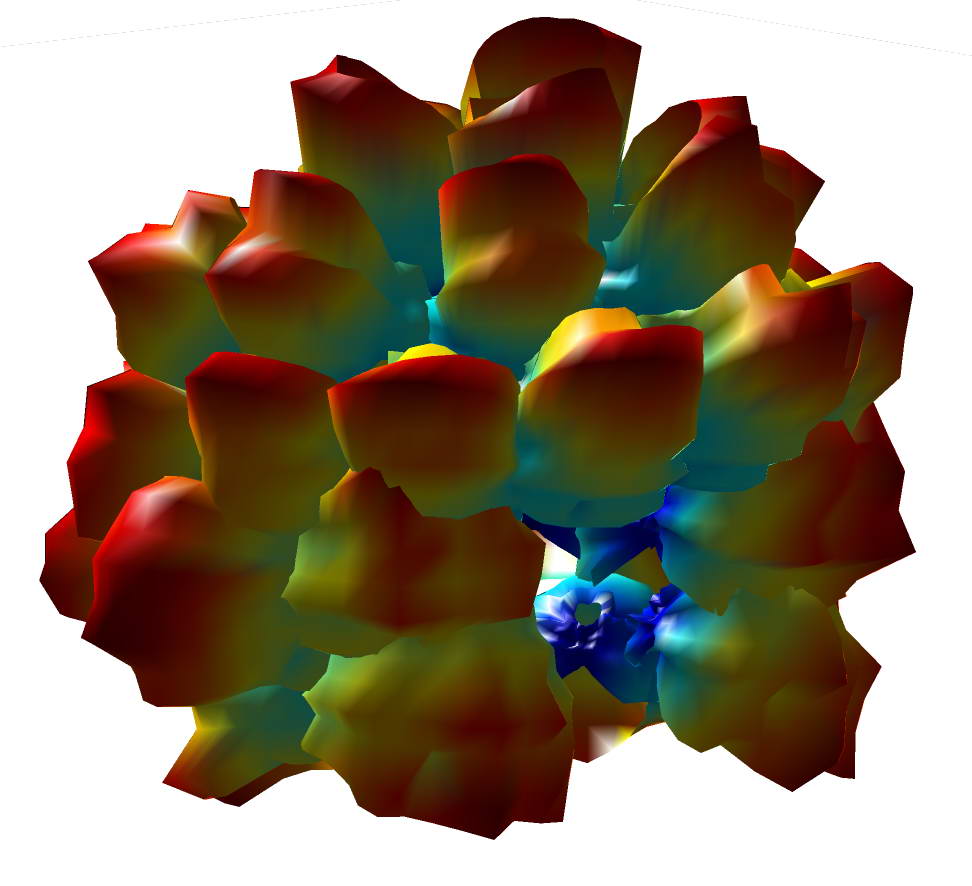
|
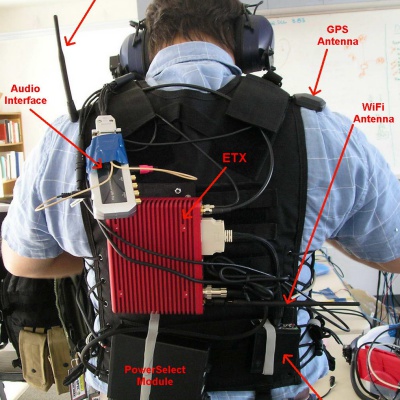
|
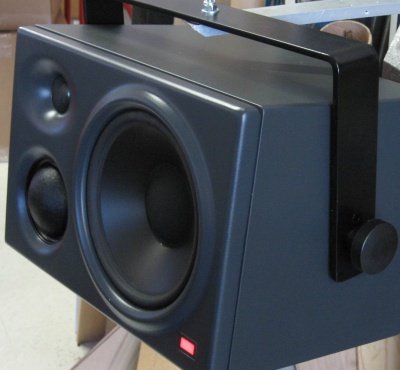
|
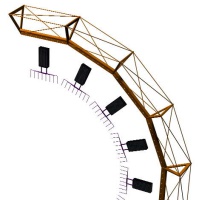
|
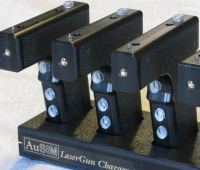
|
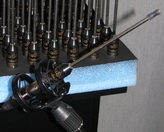
|
|
TransHear
|
3DVx-Wearable
|
Vectsonic
|
AMMAR
|
aTShooter
|
Probe Mic
|
|
|
2009
|
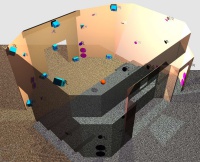 |
Exterior Effects Room (EER)
|
| Where |
NASA Langley Research Center, Hampton, VA
|
| What |
1960's era auralization auditorium completely refurbished
to facilitate state-of-the-art 3D auralization.
Features a research-proven installation of
AuSIM3D Vectsonic
loudspeaker-based positional 3D audio,
employing 27 full-range, sealed K&H O300 monitors
and 4 K&H O900 sub-woofers.
|
| Why |
A stunning and un-paralleled auditorium at its re-opening.
Perhaps some Dolby Atmos theatres later potentially upstaged it.
Perhaps some Iosono WFS installations rival it.
|
| Who |
W. Chapin, S. Rizzi, and J. Faller
|
| Published |
Vectsonic Installations
|
|
2010
|
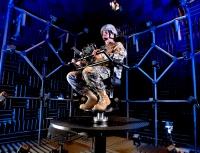 |
Environment for Auditory Research
|
| Where |
U.S. Army Research Laboratory, Aberdeen Proving Grounds, Human Performance Directorate, Aberdeen, MD
|
| What |
As chief architect, designed an auditory research facility incorporating over 650 loudspeakers and 40 microphones.
|
| Why |
AuSIM's domain expertise in understand perceptual auditory research requirements,
coupled with SPL's experience building complex audio systems,
and Meyer designing world-class loudspeakers created an unbelievable facility.
|
| Who |
AuSIM led team of Signal Perfection Ltd for cabling infrastructure and Meyer Sound for loudspeakers.
|
| Published |
Acoustics Today Specs
|
|
2012
|
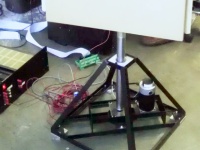 |
Acoustic Rotators
|
| Where |
AuSIM, Mountain View, CA
|
| What |
Designed and built servo-actuated rotators for varying the room acoustics upon command.
Capable to be used in real-time as part of music performance.
Actually used for psycho-perception experiments. Each acoustic baffle weighed 150 lbs.
|
| Why |
The performance requirements and financial restrictions ruled-out off the shelf solutions.
|
| Who |
W. Chapin and Leszek Szalek for Richard King and Brett Leonard of McGill University
|
| Published |
AES 2013 Rome,
AES 2013 NYC,
|
|
2015
|
 |
Perceptual Sound Localization System
|
| Where |
Facebook Reality Labs, Redmond, WA
|
| What |
Designed and built 15-foot tall (2-meter radius sphere)
automated measurement and localization system meeting design performance specifications
despite extraordinary challenges.
Employed a 700 Nm torque-ring.
|
| Why |
Moved 4-lbs sensor/emitter payload to any bearing on sphere in 2.5 seconds, silently,
with a human in the work cell.
|
| Who |
AuSIM led team of Fusion Design for mechanicals
and L2F and Bosch-Rexroth for control.
|
| Published |
N/A
|
|
2017
|
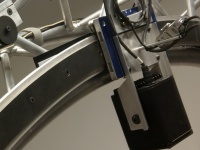 |
AuSIM HeadZap-M
|
| Where |
AuSIM, Mountain View, CA
|
| What |
Automated HRTF measurement system, designed as simplified version of 2014 system
for 1/10th the cost by eliminating localization and need for silence.
|
| Why |
With a performance of 1000 HRTF bearings per hour,
designed to solve the problem of individualized HRTF's for Artificial Reality (AR).
|
| Who |
AuSIM, with some mechanicals from Fusion Design.
|
| Published |
HeadZap-M
|
|
|


























